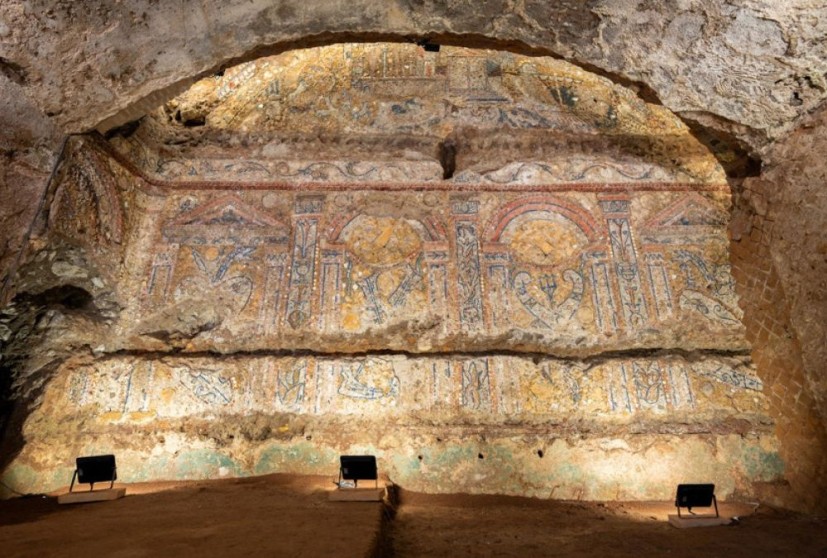Archeologists working at Rome's Archaeological Park of the Colosseum have uncovered an "extraordinary" 2,300-year-old mosaic, as a result of a five-year dig at the city's Palatine Hill site.
The complexly designed mural is part of an aristocrat's estate, also known as a "Domus," located near the Roman Forum, which has been the subject of excavation since 2018. The house is theorized to have belonged to an ancient Roman senator.
This intricate piece is almost 16-foot-and-a-half-long, made from varying hues of nacre shells, corals, precious glass, white marble, and Egyptian blue tiles, and was most likely located in the house's dining area where opulent banquets would take place.

The Owner of the Mosaic was an Ancient Roman Senator
One portion of the masterfully made artwork depicts a city by the coast with tall towers and porticos littered within it, and in the waters, three vessels afloat under sizeable oceanic waves. Italy's Ministry of Culture believes that the artwork was made as a reference to the homeowner's victories as a naval officer.
According to the site's historians, this notion is supported by established literature that described the area as primarily delegated to high-ranking members of ancient Roman society.
In a statement to CNN, Colosseum Archaeological Park's head Alfonsio Russo echoed this idea saying that it was "customary" within the ancient times to utilize "rich decorative elements as a symbol to show off opulence and high social rank."
He added by saying that the chamber the mosaic was located in also overlooked a garden and was instrumental in entertaining guests amidst summertime.
A Momentous Find in Incredibly Pristine Condition
Marco Rossi, Roman antiquities professor and head of the mosaic lab at Rome's Università degli Studi di Roma Tre, explained that the artwork was found "incredibly well preserved" because it was integrated as part of the walls instead of how mosaics are usually used as decorative floor pieces.
As per Rossi, this was the primary reason why the artwork was not "ruined by the weight of debris," and despite its fragile nature, being made from glass, tilings, and marble, it has not "chipped across the centuries."
The excavation of the site will continue until next year, which could mean the unearthing of more rooms.
Russo said that once the entirety of the "Domus" gets dug out, the team at the archaeological park will commence restorative work until the site becomes "among the most evocative of ancient Rome." For the Director, the end goal is to make the find "accessible to the public as soon as possible."